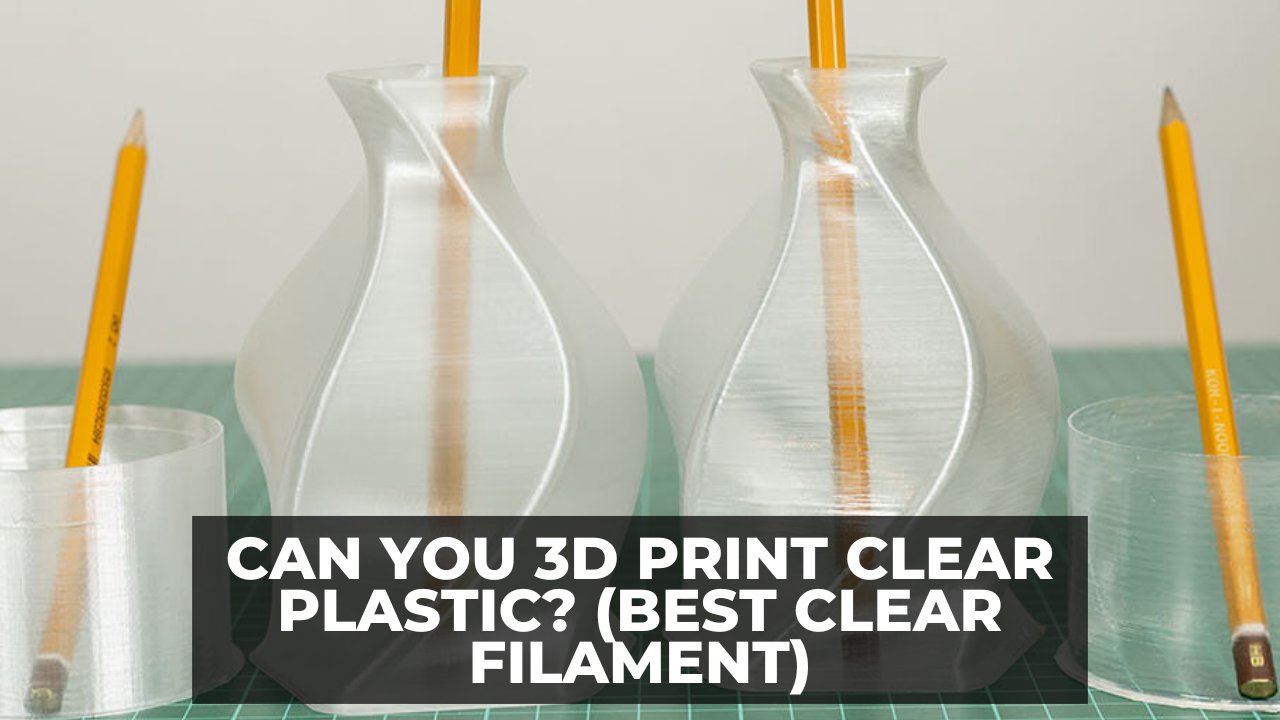
Can You 3D Print Clear Plastic? (Best Clear Filament)


At 3DSourced we’ve covered everything 3D printing and 3D since 2017. Our team has interviewed the most innovative 3D printing experts, tested and reviewed more than 20 of the most popular 3D printers and 3D scanners to give our honest recommendations, and written more than 500 3D printing guides over the last 5 years.
In this guide, I’ll take you through everything I’ve learned about 3D printing clear plastic over the past couple of years – including which materials can be printed clearly, and the steps you can take to maximize the clarity of your transparent prints.
The most important thing when 3D printing transparent models is to use high-quality, clear filaments like PETG, ABS, or PLA.
While it’s impossible to print 100% clear models, printing simple designs with thin walls will certainly help.
Your settings will also play a key role – print slow and hot with larger layer heights for best results.
If you’ve tried 3D printing clear plastic before without much success, this ‘how to print clear filament’ guide should clear things up for you!
(Sorry, I can’t promise that will be the last pun in this article!)
What is Clear 3D Printer Filament?
Clear filament is translucent, meaning it lets some light through and looks clear if you print with the right settings and finish your print correctly. While translucent, it’s impossible to print 100% clear models, but when printing translucent filaments like clear PLA, PETG, ABS, and PMMA, they’re still called clear filaments.
- What is Clear 3D Printer Filament?
- How to 3D Print Clear Filament: Best Practices
- Which is the Best Clear Filament?
- Clear PLA Filament
- Clear ABS Filament
- Clear PETG Filament
- Translucent Polycarbonate Filament
- Translucent PMMA Filament
- Best Places to Buy Clear 3D Printer Filaments
- Best Uses for Clear 3D Printing Filaments (& Projects)
- Lampshades and Light Effects
- Containers and Storage
- Homemade Tumblers
- Glass Replacement
- 3D Printed Transparent Art
- Summary: 3D Printing with Clear and Translucent Filaments
How to 3D Print Clear Filament: Best Practices
Different filaments have different tendencies, so it’s important you know what you’re dealing with to get the best results.
What are you trying to print, how are you printing it, and what are you printing it with – these are all questions to ask yourself.

Choosing the Right STL Model for Clear Filament
It doesn’t matter how clear a clear filament you use if your STL file is solid or extremely complex. The best clear filament won’t keep an internally complex model clear, no matter what you do.
Every layer of filament, each extra layer deep – that’s more and more light being dispersed inside your print.
For example, 1 window is pretty clear. But if you stacked 100 windows in front of each other, you’re probably not going to see a huge amount of light coming through the other end.
Each layer refracts the light further – so clear ABS filament (or any other material) will never create perfectly clear prints, unfortunately, simply due to limitations with your printer.
But there are things you can do to improve the translucency so that it will allow light to pass through it.
So for 3D printing clear filaments:
If you want to make a model that’s got high translucency, we recommend printing very thin walls (ideally only 1 layer thick), with no or very little infill.
3D Print Slow, Hot, and BIG Layers
It helps if you print most clear 3D printer filament at the top-end temperature that they’re recommended at, this keeps the definition between each layer as minuscule as possible.
You may lose a little detail, but you should gain smoothness. And in this game smoothness means more light passing through.
You also want to print a little slower than normal. Ideally, your printer wants to be very accurate, the more accurate your printer – the better your prints look typically, and the clearer they’ll look.
Make sure your belts are appropriately tight so that there’s no overshooting of the print head (even by fractions of a millimeter) that could lead to less accuracy.
Also, print with a larger layer height. If your layer height is larger, you won’t need as many layers. So it may make sense to print thicker layer heights and even use larger nozzle sizes.
However, if your printer is really accurate, printing very thin nozzle diameters can also yield nice results on 1 layer wall thicknesses.

Which is the Best Clear Filament?
Let’s take a look at the various options you have in the form of transparent 3D printing filaments. The positives, negatives, and best printing tips for each.
The most commonly available clear or translucent 3D printer filaments are: PMMA, PETG, Clear (Natural) PLA, Trans Clear ABS and Polycarbonate.
You may find that transparent PLA filament is the easiest to start with, but we’ll cover all the clear 3D printing filament you can print below.
It goes without saying that you’ll get out of this what you put into it. If you’re using cheap, poor-quality filament that isn’t either as clear as it could be, then your results will be restricted.
Clear PLA Filament

A lot of natural PLA filaments aren’t actually clear PLA filament, but the good quality ones are. Ours is about as clear as PLA gets, although it has a very faint yellow tinge to it which is natural with PLA – you can just see this in the Spitfire wing above.
Like ABS, this is a commonly used filament. It also has the added benefit of being biodegradable, so less damage is inflicted on the environment, so you can feel a little better about using it.
Translucent PLA filament is one of the easiest to print clearly and get good results. Good quality PLA can also be easily sanded & polished afterward – which for this material is the best way of getting an extremely smooth finish to let light pass through uninterrupted.
It’ll be as close to transparent PLA filament as possible.
It’s important to use a fine grit, depending on the layer height you printed with. Thicker layers and you’ll need coarser sandpaper. Then use finer and finer grits, sanding in a circular motion each time (this bit is important because you’re trying to remove all surface imperfections).
Start at maybe 400 grit, and upwards in 200 increments from there. Finish with 3000 or higher grit to get a really smooth finish.
If you can do this on both sides of a print wall, you can get a very clear finish.
For best results make sure the sandpaper is wet, and don’t be too aggressive and heat up the surface by going too fast.
Clear ABS Filament

ABS isn’t naturally clear – like the other materials. This means that we need to blend it with an additive to make it clear. And by clear, really we mean translucent at best.
If you absolutely need to print in ABS, then using clear or translucent colors of ABS is a good compromise – but ultimately it won’t print as clear as some of the other materials.
ABS can be post-print finished with Acetone vapor smoothing though, which is a bonus. This means you can get the layers very smooth – which helps light transmission immensely.
Clear PETG Filament

PETG is a really durable clear 3D filament with excellent layer adhesion (almost unbreakable) and, less shrinkage than other filaments. It’s great for 3D printing big clear models that won’t break under pressure.
It is odorless when printing and often produces clear, smooth finishes. Thus making it the ideal material when you want something with a bit of flex that won’t break.
It can’t be smoothed with acetone though, and although it can be sanded, it doesn’t sand as nicely as PLA. You should find PETG prints quite nicely though, meaning it’s less likely to require post-print finishing.
We recommend PETG as being perhaps the most transparent 3D printer filament needing the least amount of post-printing work to achieve an acceptable result.
Translucent Polycarbonate Filament

PC is an extremely durable and optically transparent 3D printing filament that is best printed in a warm environment.
Due to its durability, it can be bent repeatedly without cracking, making it great for creating all sorts of projects.
It finishes with a nice glossy sheen to it. It needs a hot extruder to print it normally, and if you’re looking for translucent results, we’d recommend going even hotter still (260°C+).
A great advantage with PC is that it can be smoothed with acetone similar to ABS to bring out clearer results.
- Read our full guide to Polycarbonate filament
Translucent PMMA Filament
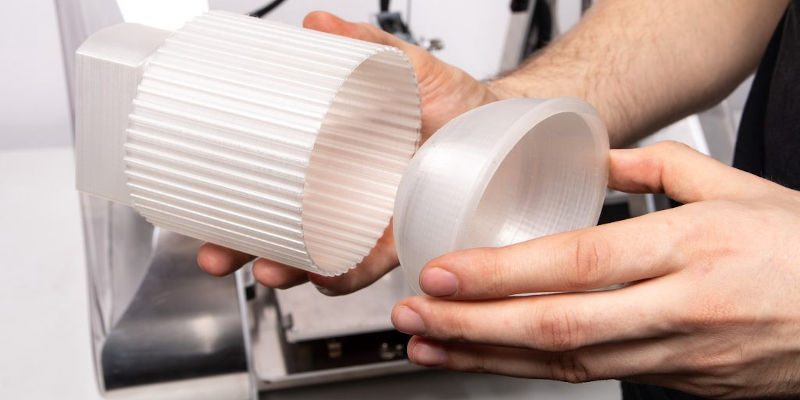
If you’ve used this filament before, you’ll know that it is a clear plastic acrylic material with high impact strength. Due to its strength and impact resistance, PMMA is commonly used to replace glass in certain applications.
Typical PMMA grades allow up to 92% of light to pass through its surface, which is more than other plastics and, surprisingly, even most glass.
PMMA is available in a nice range of colors, and prints quite clearly in comparison to other materials.
Best Places to Buy Clear 3D Printer Filaments
Now that you’ve got a good idea of clear 3D printer filament types and their uses, you’re probably wondering where the best places are to buy them.
Not only can clear filaments get expensive, they also need to be treated and handled differently than normal filaments.
Because of this, they are a little more awkward to use, and so it can be difficult finding a supplier that won’t let you down by cutting corners.
3DSourced is reader-supported. When you buy through links on our site, we may earn an affiliate commission. Learn more
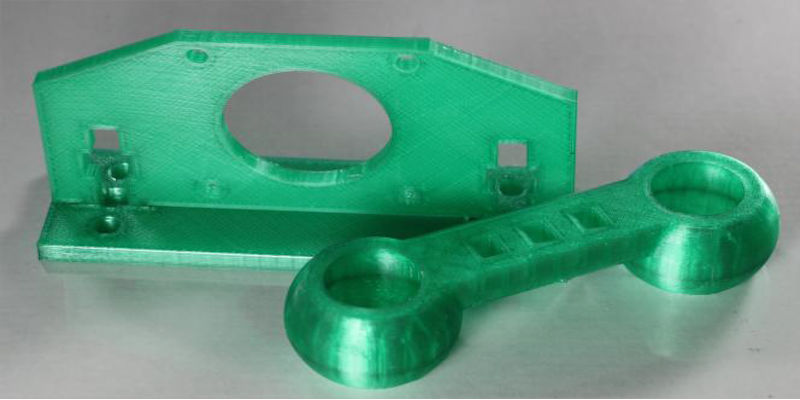
Most of the readily available clear 3D printer filaments are PLAs, so it’s worth remembering that PLA is seldom really fully transparent. Many negative reviews and conversations about clear PLA products argue that it isn’t completely see-through. Before adding to your cart, note that ‘clear’ PLA may come out yellow and translucent.
Here are the most reliable places to get your clear filaments, as well as what kinds they sell.
MatterHackers
- Matterhackers translucent PLA — Available here
- Clear Ultimaker filament — Available here
Pros
Carries an impressive array of filaments.
Sturdy, reliable, and complete with guides for new users.
Top-notch quality for a good price.
Cons
Like all clear PLA filaments, it will have a yellow-ish hue while printing.
MatterHackers is a household name in 3D printing, and carries an impressive array of filaments like their very own NylonX.
MatterHackers have a range of translucent and transparent PLAs available. The pro range of translucent PLAs lives up to MatterHackers’ reputation by being sturdy, reliable, and complete with guides for new users.
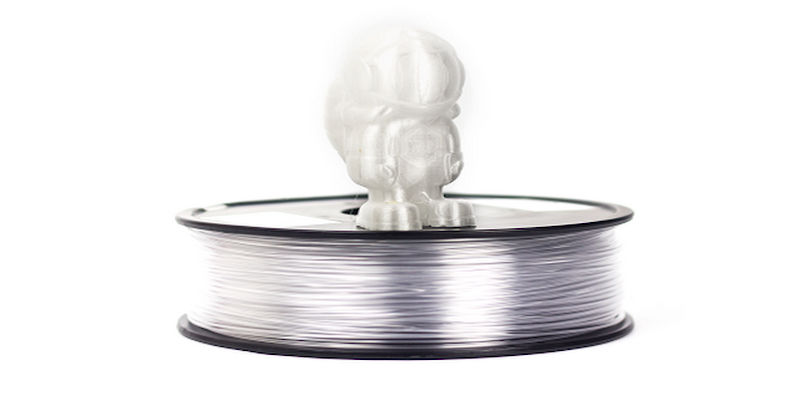
For transparent PLAs, you should check out their Ultimaker filament. Like all clear PLA filaments, it will have a yellow-ish hue while printing, and so doesn’t offer full transparency as the name suggests. However, the quality is top-notch and the prices are not to be sneezed at.
ProtoPlant
- Proto-pasta clear PETG filament — Available here
- Iridescent ice clear PLA — Available here
Pros
Has greater clarity than standard materials.
Available as a clear filament in different transparencies.
Cons
Pretty expensive.
ProtoPlant makes their own brand of PLA filament, which they’ve named HTPLA (High-Temperature PLA) which has greater clarity than standard materials.
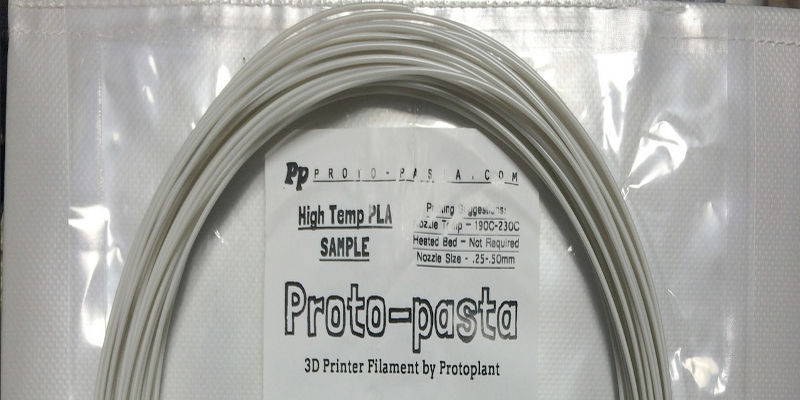
HTPLA is available as clear filaments, each with different levels of transparency. Their Iridescent Ice and Cunning Clear filaments are the best choice for those of you who want see-through filaments without spending too much on rarer, more specialized products.
Solutech
- Clear PLA — Available here
- Clear PETG — Available here
Pros
Truly unique.
Range of “gimmicky” filaments available.
Cons
Can be brittle.
If you want something truly unique, or are simply bored of printing with standard 3D printer filaments, then I highly recommend you check out the range offered by Solutech.
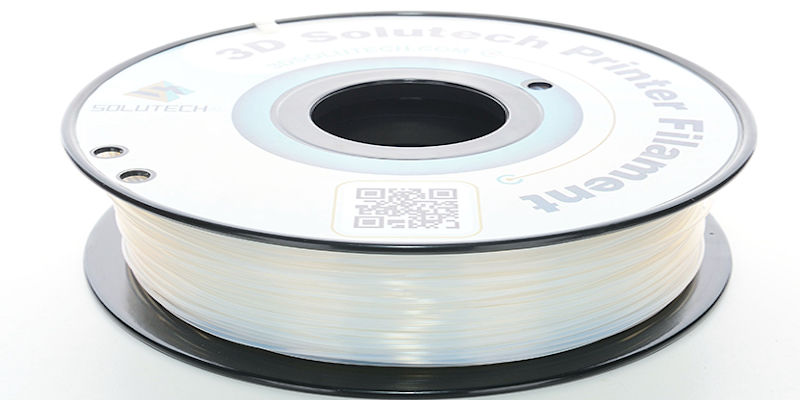
They specialize in what could be described as ‘gimmick’ filaments, from translucent PLA to phosphorescent filaments that glow in the dark!
Best Uses for Clear 3D Printing Filaments (& Projects)
There are a lot of cool uses for clear filaments, some of which you’ve likely already thought of. Personal and professional printers will find plenty of cool and practical uses for clear 3D filaments.
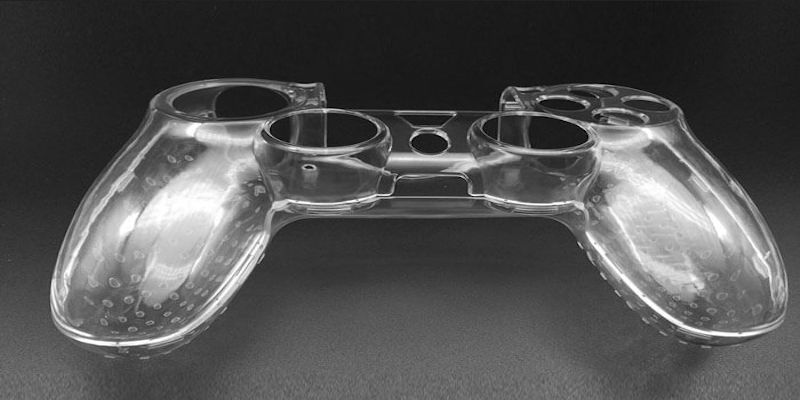
From cool-looking designs to sellable prints, here are some of the best ways to put clear filaments to use.
Lampshades and Light Effects
My personal favorite, and perhaps the most immediately obvious, use for clear 3D printer filaments is for lighting effects.
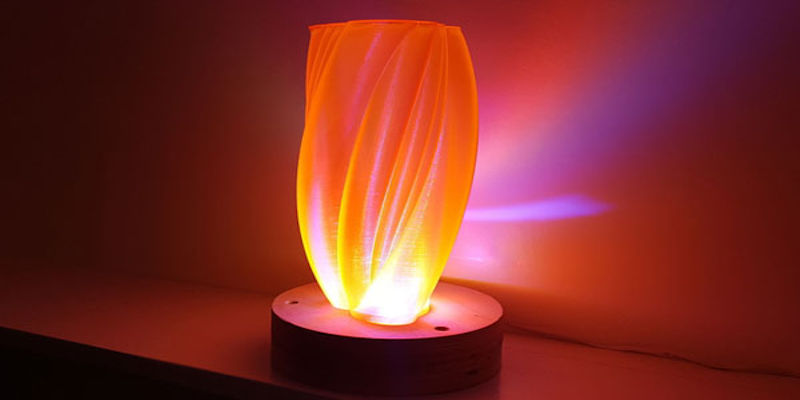
Anything from a simple lampshade to a colorful LED-lit display is a great way to put transparent filaments to use. After making a clear lampshade, you can even jazz it up with a 3D pen to make any kind of art you like!
Containers and Storage
We all have that one drawer in our kitchens that contain a boatload of miscellaneous stuff that, for one reason or another, we just didn’t want to throw away. In these drawers, you’ll often find loose batteries rolling around, pens and pencils of all colors and stages of use, and maybe a few lighters or matchbooks.
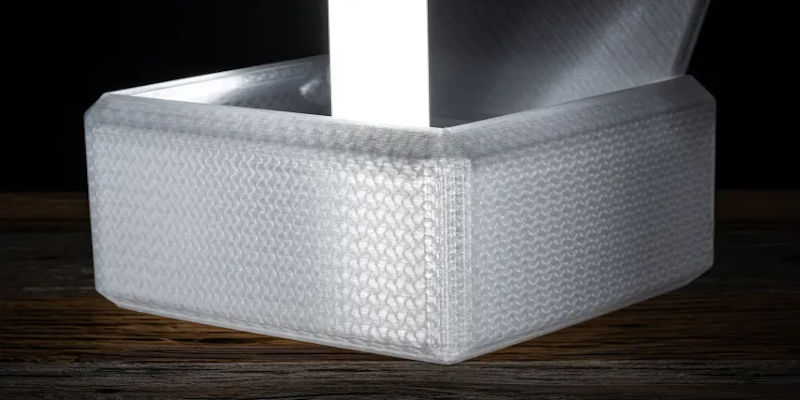
By making a storage box or tube with clear 3D printer filament, you’ll never have to rifle around the drawer again, praying your roaming hands don’t come across something sharp.
This won’t only save you precious time and sanity the next time your remote dies, but will also tidy up your home and make it more organized. You can even make storage boxes for different recyclables like lightbulbs, batteries, or leftover plastic shavings from your finished prints.
Homemade Tumblers
While not all 3D printer filaments are food safe, making your own kitchenware is a fun and practical way to spice up your home. Using clear filaments to make glasses and cups is a creative exercise, and simple enough that anyone can make one.
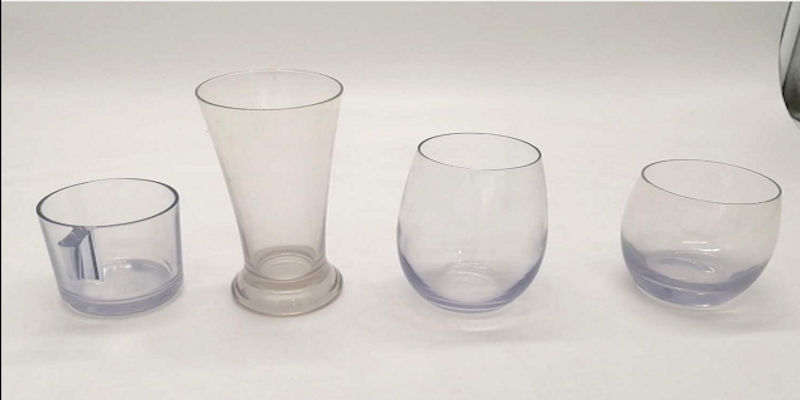
If you do plan on using your clear 3d filament to make cups and glasses, then be sure to follow our guide on food-safe 3D printer filament.
Glass Replacement
To replace something glass, you need an exact fitting sheet. Windows, phone screens, and protective guards can’t just be thrown on and expected to stay.
Measuring and cutting glass for replacements and repairs can be time-consuming, even more so if you get an inexactly measured pane. If you need a see-through replacement for something, or simply need a temporary fill-in for important areas like windows or greenhouse walls, clear 3D printer filament is a great way to save money and time.
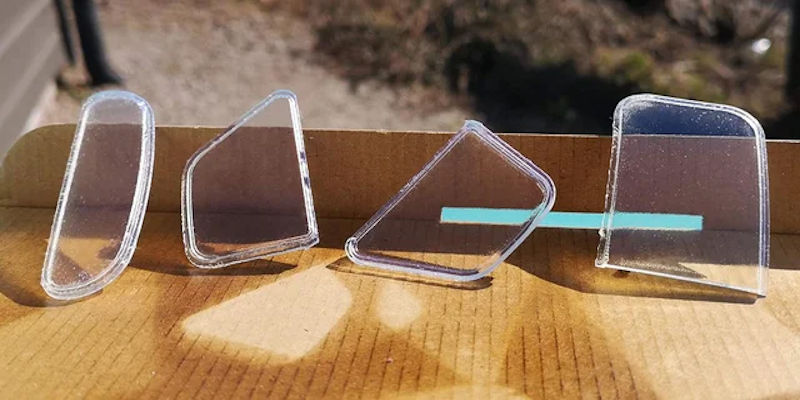
As a professional, you can even use clear filaments to create phone screen protectors or window panes with cool designs for your customers.
3D Printed Transparent Art
The applications for translucent and transparent filaments in art should be as clear as the materials themselves. Using transparency as an artistic tool opens brand new doors for lighting effects and visually impressive designs.

Whether you’re creating pieces to display in your home, gift to friends, or sell as part of your business, there are plenty of ways to spice up any artwork with transparent materials. If you’ve already been making and selling things with your 3D printer, releasing clear editions of existing works is a great way to add to your store.
Summary: 3D Printing with Clear and Translucent Filaments
Transparent 3D printing is quite a finicky business. Even the slightest miscalculation in nozzle temperature, printing speed and cooling can all affect how clear your print is.
While it isn’t rocket science, there’s certainly a method to it.
It’s worth bearing in mind that each printer and filament often requires specific settings, meaning what works for clear ABS almost certainly won’t work for clear PETG filament.
With that in mind, you’re really best getting one material you think will be most suitable to what you need. Then experiment with the printing and post-printing techniques mentioned above to get the best results.




















